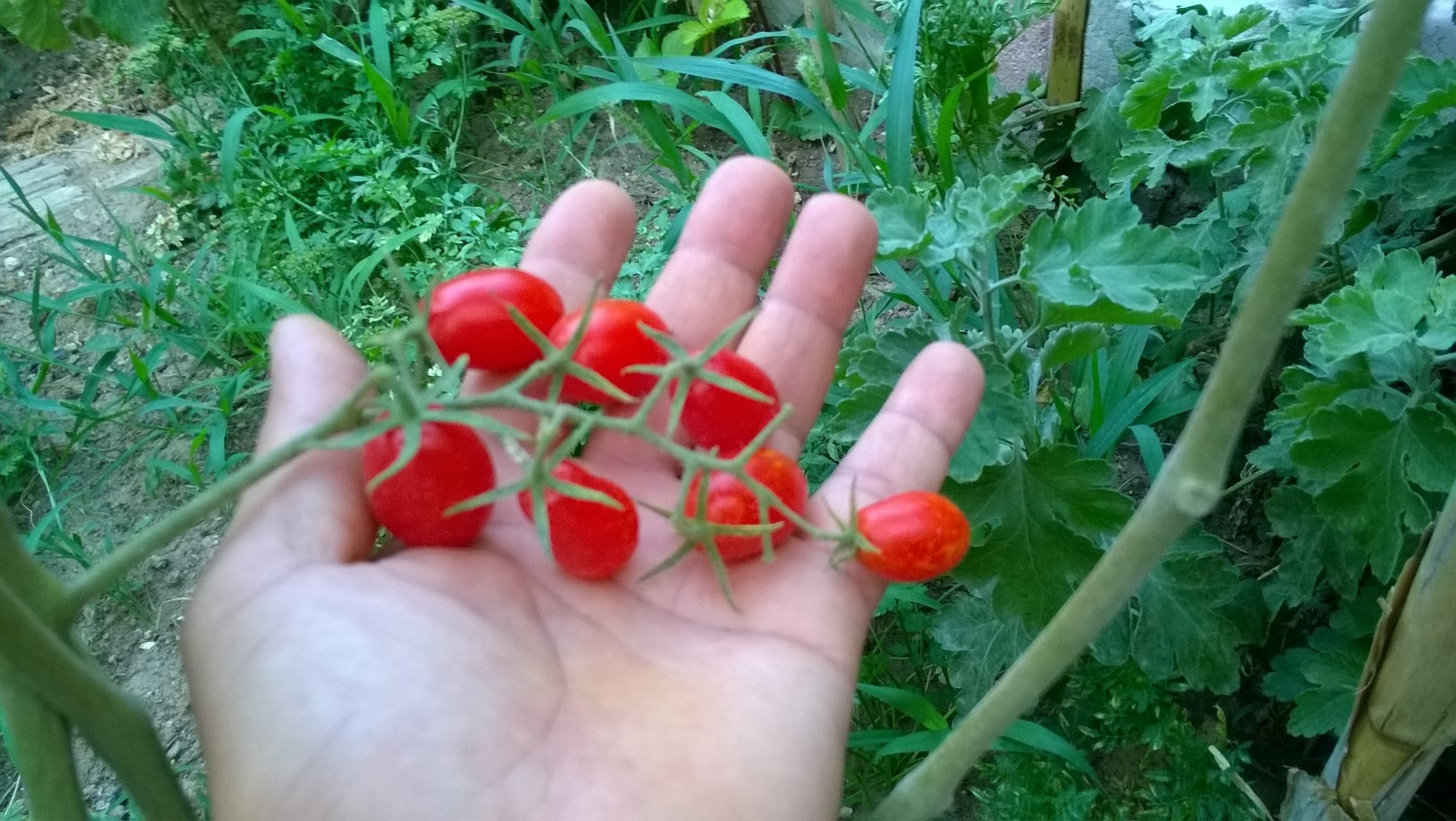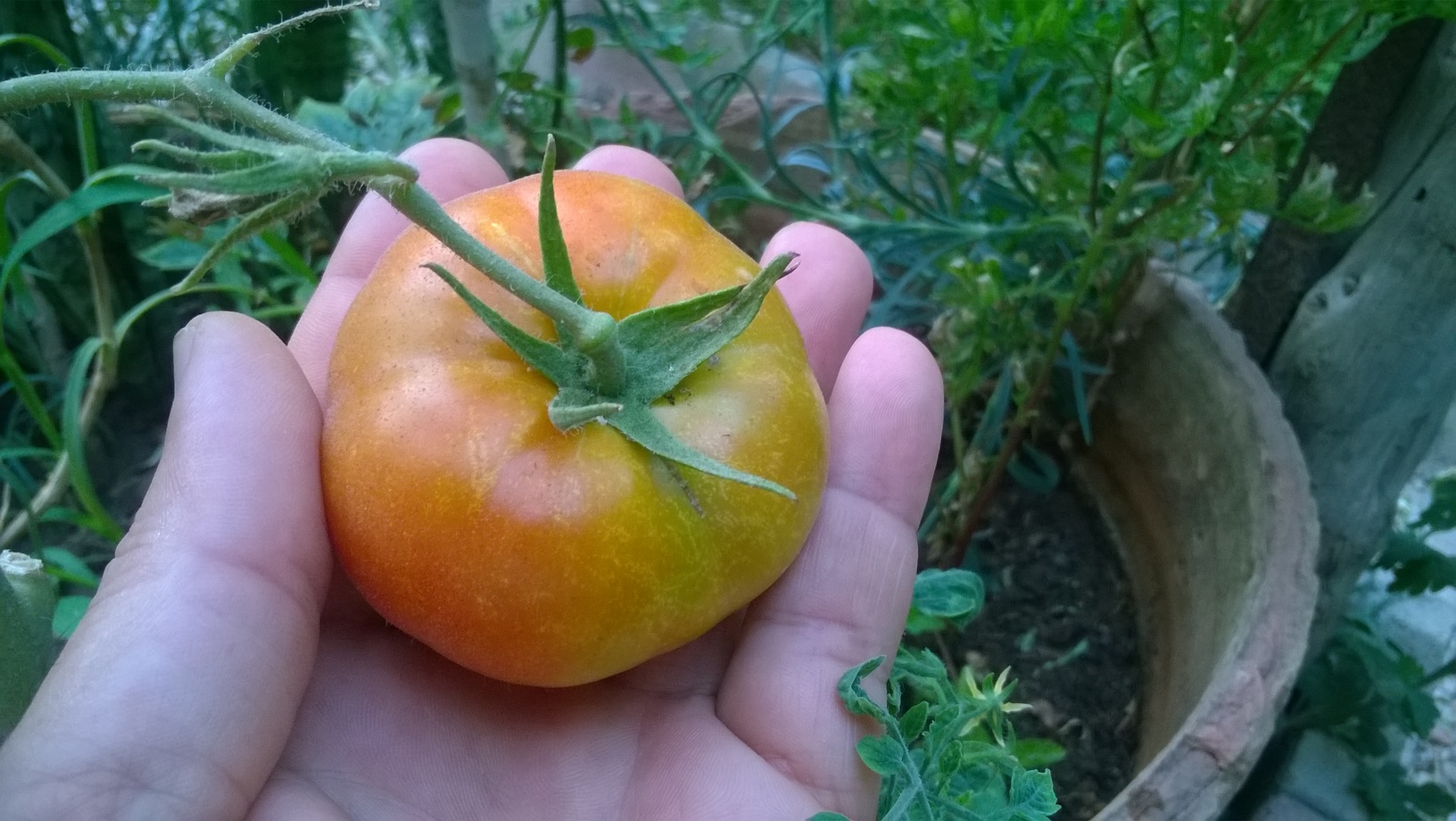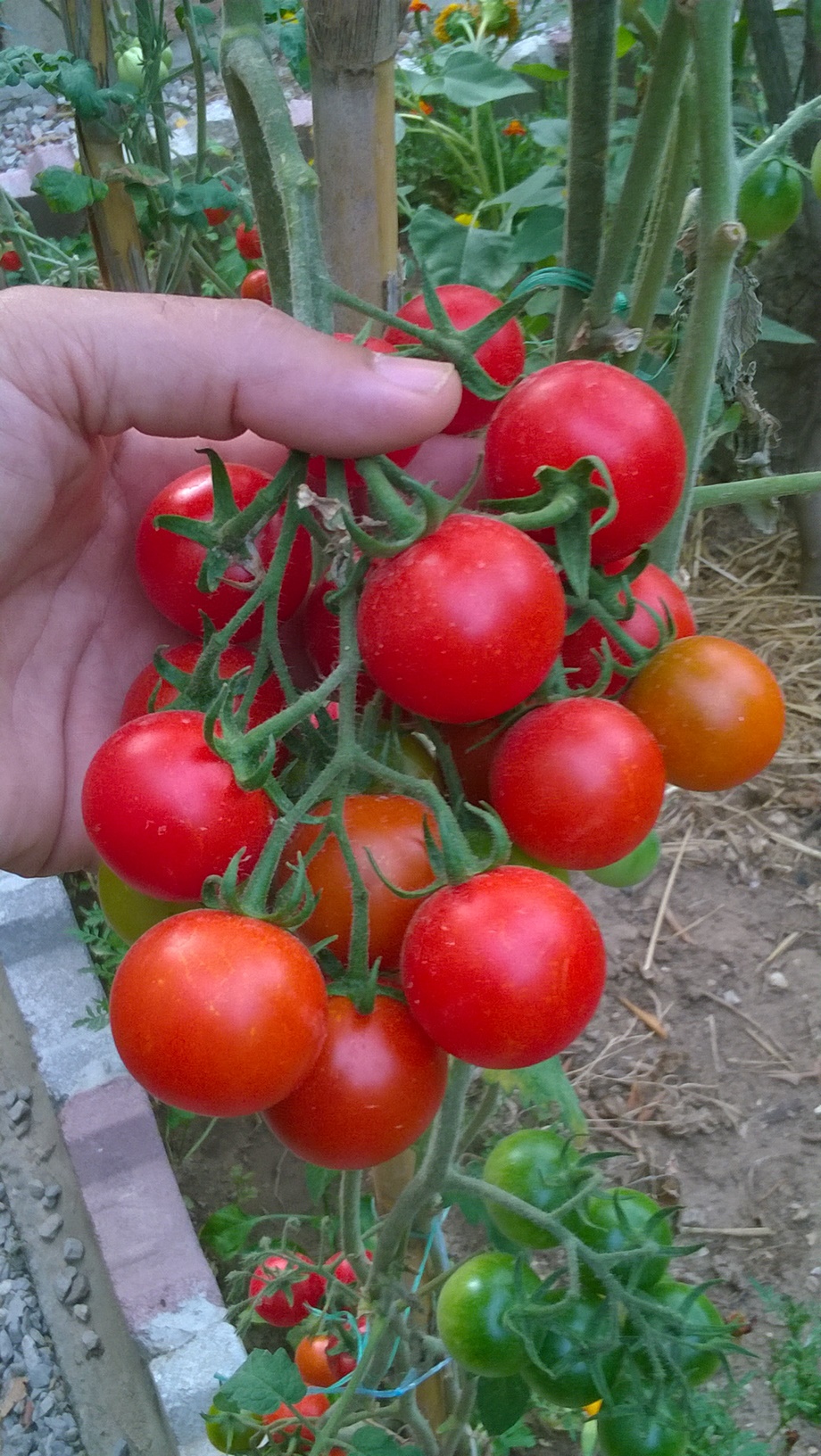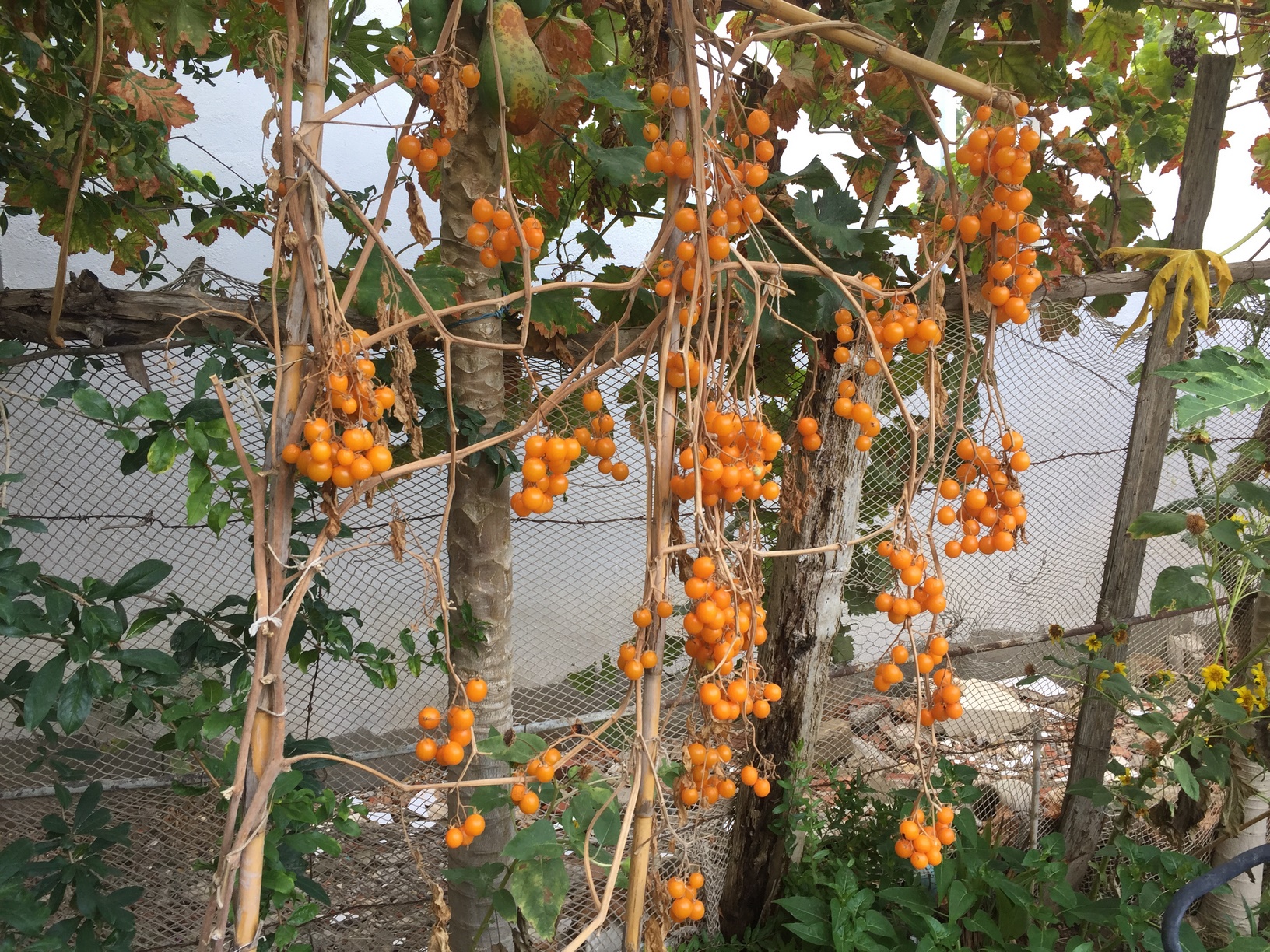History of the tomato reaches 2500 years to the past, when people of ancient Aztec empire saw its value and integrated it into their lives. Tomato plants belong to the family Solanaceae, or the nightshade family. The tomato is native to western South America and Central America. The Latin name for the cultivated tomato is Lycopersicon escutentum. Lycopersicon pimpinellifolium is a wild species of tomato which is found in the low altitude coastal valleys in Peru. It produces cherry-size red fruit and easily hybridises with cultivated varieties. Probably the first tomatoes came from Peru, and wild tomatoes can still be found in the Andes. By the time the conquistadors came to Central and South America, there was widespread cultivation of tomatoes, though there’s much debate about where tomatoes were first raised and about exactly how they made their way north to Mexico. Cortez discovered tomatoes growing in Montezuma's gardens and brought seeds back to Europe where they were planted as ornamental curiosities.
The first variety to reach Europe was yellow in color, since in Spain and Italy they were known as pomi doro, meaning yellow apples. Italy was the first to embrace and cultivate the tomato outside South America. The French referred to the tomato as pommes d'amour, or love apples, as they thought them to have stimulating aphrodisiacal properties. Tomatoes were originally grown in Britain and the rest of Europe as ornamental climbers and were cultivated for their decorative leaves and fruit.
The English word {tomato} derives from the word {tomatl} its name in Nahuatl, the language of the Aztec people. The English form {tomate} first appeared in the 17th century, and was later modified to {tomato}.
The first British tomato grower was Patrick Bellow of Castletown who successfully reared plants from seeds in 1554. Tomatoes are now the most widely grown vegetable in the world.
Is the Tomato a Fruit or Vegetable?
By definition, a fruit is the edible plant structure of a mature ovary of a flowering plant, usually eaten raw, some are sweet like apples, but the ones that are not sweet such as tomatoes, cucumbers and peppers. Are commonly called vegetables. Botanists claim that a fruit is any fleshy material that covers a seed or seeds, where as horticulturists point of view would pose that the tomato is a vegetable plant. Until the late 1800's the tomato was classified as a fruit to avoid taxation, but this was changed after a Supreme Court ruling that the tomato is a vegetable and should be taxed accordingly. The history of the tomato has classified as a poisonous beautiful plant, a tax-avoiding fruit, and a taxable vegetable. The tomato now is the most popular vegetable in America and enjoyed by millions all over the world.
The high acidic content of the tomato makes it a prime candidate for canning, which is one of the main reasons the tomato was canned more than any other fruit or vegetable. The largest producers of tomato are China with 24% of world production, followed by United States, Turkey, India, Egypt and Italy.
. The difference between "Indeterminate" and "Determinate" tomatoes .
. Determinate tomatoes .
Determinate varieties do not set large fruits, and tomatoes plants do a better job of allocating resources to small fruits compared to large ones. As long as sunny weather reigns while the fruits are ripening, the determinate tomato varieties can be counted upon to taste wonderful.
Determinate tomatoes grow well in hot climates, where good growing conditions end in early summer. They are also good in humid climates, where tomato diseases can destroy full-season tomatoes just as they ripen in late summer. In any climate, determinate tomatoes are great for preserving because they ripen their crop all at once, usually within a three-week period. The plants can then be pulled and composted, making room for a fall crop of leafy greens. Not all determinate tomatoes are extra earlies, and full-season varieties rated at 75 to 80 days to maturity offer good harvests from big, robust bushes.
Indeterminate varieties of tomatoes are also called "vining" tomatoes. They will grow and produce fruit until killed. They can reach heights of up to 12 feet although 6 feet is normal. Indeterminate tomatoes will bloom, set new fruit and ripen fruit all at the same time throughout the season. Indeterminate tomato varieties are vining plants that continue growing in length throughout the growing season. They continually set fruit through the entire growing season. As a result, rather than one large harvest, they produce a steady supply of tomatoes.
Indeterminate tomatoes can grow to be rather bulky shrubs. They will also require more in the way of staking or caging over the course of the season. So robust is the growth pattern on some indeterminate varieties that ordinary wire cages are often inadequate. You may need to stake these bulky heavy shrubs with heavy metal rebar stakes or another sturdy support structure.
The selection of tomato will depend upon the use you have for the fruit. If you will be canning, a determinate type, which ripens all around the same time, is useful, but If you want fruit throughout the growing season, then an indeterminate tomato is best.
Determinate varieties do not set large fruits, and tomatoes plants do a better job of allocating resources to small fruits compared to large ones. As long as sunny weather reigns while the fruits are ripening, the determinate tomato varieties can be counted upon to taste wonderful.
Determinate tomatoes grow well in hot climates, where good growing conditions end in early summer. They are also good in humid climates, where tomato diseases can destroy full-season tomatoes just as they ripen in late summer. In any climate, determinate tomatoes are great for preserving because they ripen their crop all at once, usually within a three-week period. The plants can then be pulled and composted, making room for a fall crop of leafy greens. Not all determinate tomatoes are extra earlies, and full-season varieties rated at 75 to 80 days to maturity offer good harvests from big, robust bushes.
. Indeterminate tomatoes .
Indeterminate varieties of tomatoes are also called "vining" tomatoes. They will grow and produce fruit until killed. They can reach heights of up to 12 feet although 6 feet is normal. Indeterminate tomatoes will bloom, set new fruit and ripen fruit all at the same time throughout the season. Indeterminate tomato varieties are vining plants that continue growing in length throughout the growing season. They continually set fruit through the entire growing season. As a result, rather than one large harvest, they produce a steady supply of tomatoes.
Indeterminate tomatoes can grow to be rather bulky shrubs. They will also require more in the way of staking or caging over the course of the season. So robust is the growth pattern on some indeterminate varieties that ordinary wire cages are often inadequate. You may need to stake these bulky heavy shrubs with heavy metal rebar stakes or another sturdy support structure.
The vines of indeterminate tomatoes have no predetermined height or number of side shoots, so grown under optimal conditions, these tomato plants can get very large. Indeterminate varieties tend to be later fruiters because so much of their Spring energy is dedicated to putting out their extensive vines.
The selection of tomato will depend upon the use you have for the fruit. If you will be canning, a determinate type, which ripens all around the same time, is useful, but If you want fruit throughout the growing season, then an indeterminate tomato is best.
. The difference between "Hybrid" tomatoes and "Heirloom" tomatoes .
. Hybrid tomatoes .
Are genetically created for a particular purpose the marketing and distribution interests, because these were the most commonly available in markets and seed catalogues. Hybrid tomatoes are a cross between two genetically different tomato varieties. With a hybrid, you get the best qualities of both parents and home gardeners prefer them because they present fewer problems. Hybrid tomatoes have a reputation for not being as susceptible to diseases and pests as their heirloom counterparts. Each year new hybrid tomato varieties are offered. You may see them labeled as hybrids or F1, {first filial generation}, or F2, {Second filial generation}. Most gardeners agree that hybrids are not as flavorful as heirlooms and have a reputation for not being as susceptible to diseases and pests as their heirloom counterparts.
Are genetically created for a particular purpose the marketing and distribution interests, because these were the most commonly available in markets and seed catalogues. Hybrid tomatoes are a cross between two genetically different tomato varieties. With a hybrid, you get the best qualities of both parents and home gardeners prefer them because they present fewer problems. Hybrid tomatoes have a reputation for not being as susceptible to diseases and pests as their heirloom counterparts. Each year new hybrid tomato varieties are offered. You may see them labeled as hybrids or F1, {first filial generation}, or F2, {Second filial generation}. Most gardeners agree that hybrids are not as flavorful as heirlooms and have a reputation for not being as susceptible to diseases and pests as their heirloom counterparts.
. Heirloom tomatoes .
Are open-pollinated tomatoes, whose seeds have been handed down from generation to generation. They are generally thin-skinned, extremely flavorful and have a natural resistance to disease. They’re true to their type from their own seed. Gardeners appreciate their consistency and they can be eaten raw or cooked. Some heirlooms have production histories spanning hundreds of years. A tomato variety is considered an heirloom if it has been cultivated for at least 3 generations without cross-pollination between varieties. One of the primary reasons that heirloom tomatoes are so popular is because after finding a favorite heirloom tomato variety, you can save the seeds of that variety for many generations to come. Many heirlooms have unique shapes and sport a variety of colors, including purple, yellow, white, orange, pink, red, green and black. These types of tomatoes take longer to mature and produce fewer tomatoes than hybrids.
In the last few centuries this South American plant managed to spread all across the world, becoming one of the best know food ingredients and one of the most beloved vegetables























